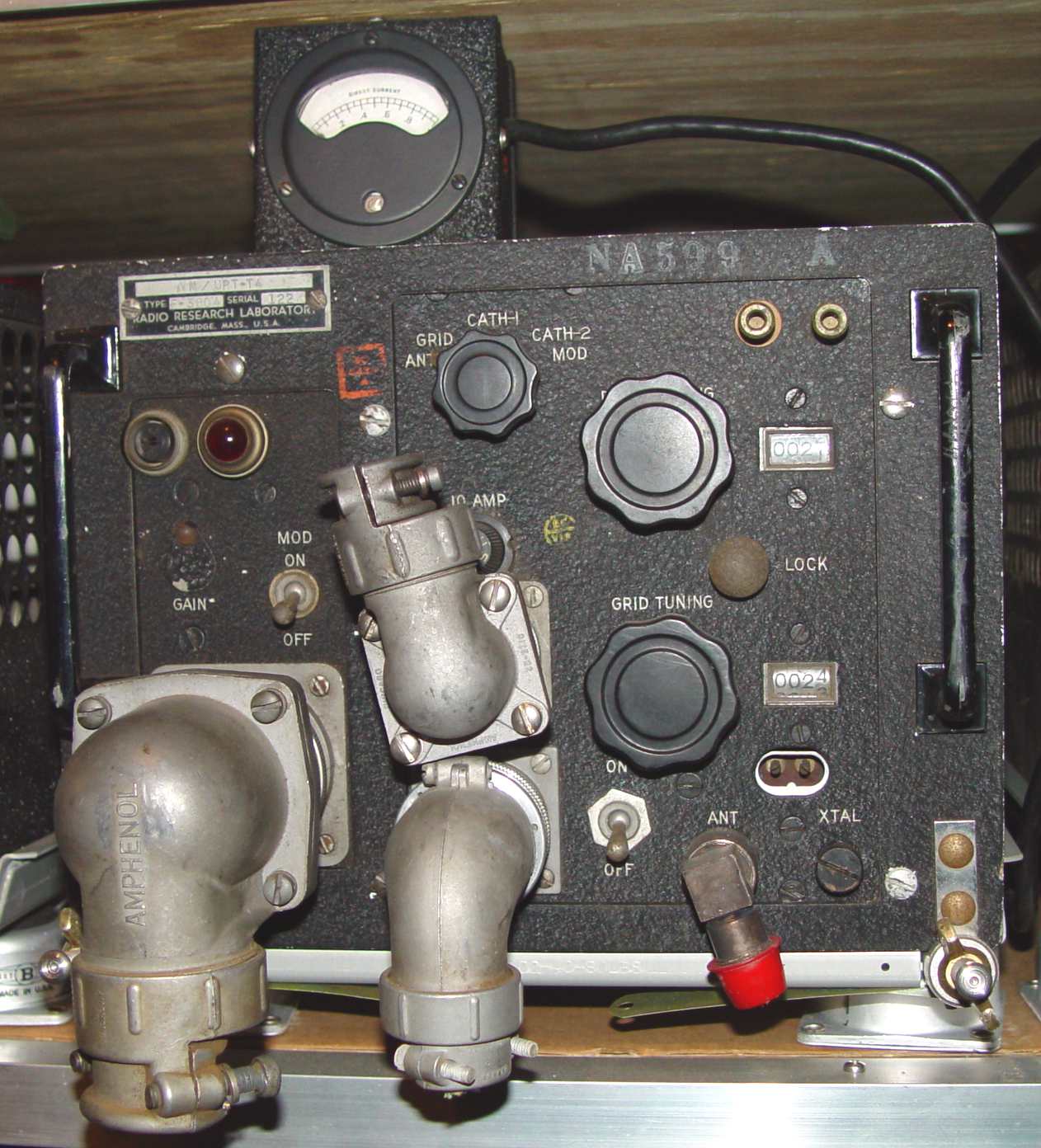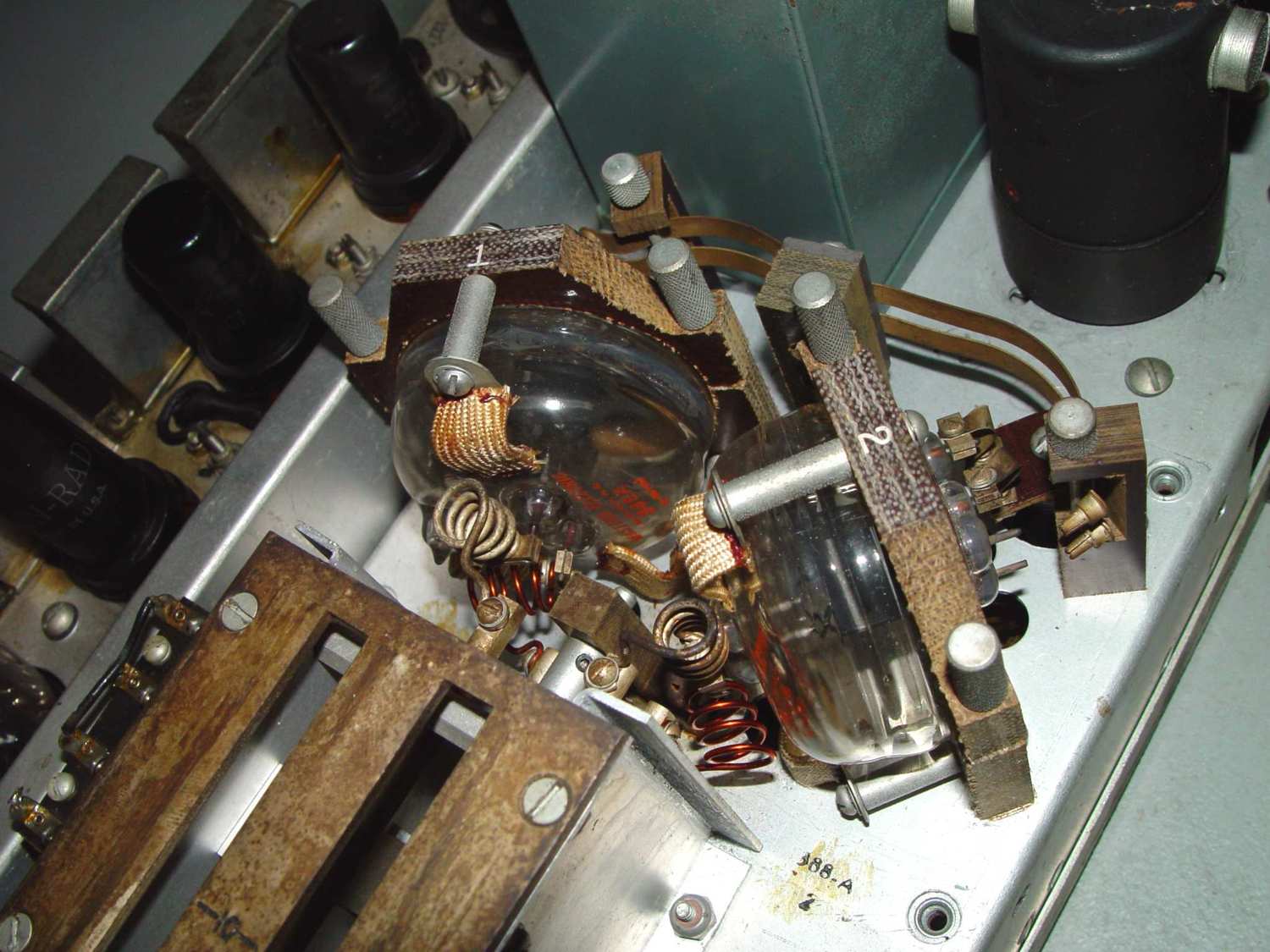APQ-2 "Rug" jammer
This was one of the earliest jammers, as evidenced by its miniscule 5 watt output, and covered the frequency range of
450MHz TO 720MHz in a single band. The initial target was the German Wurzburg fire control radar, which had been going through
a variety of modifications to extend its frequency range, though the APQ-2 was later used in the Aleutians to counter
new Japanese radar developments.
Each of the production jammer series had a training counterpart (AN/UPT-**) designed for teaching its characteristics and
operation. They were based on the standard jammer, but had additional cables that lead to a control box in which an
instructor could introduce some of the variations in operation and performance that might be expected on a combat mission.
The APQ-2 below is one of those trainers, a very uncommon example designed by Radio Research Laboratory at MIT, who designed
most of the WWII jammers. The microphone connector to the left of the pilot light and the connector to the left of "Grid Tuning"
are added for this purpose. The meter above the transmitter is an ID-60, used to tune the plate current for maximum output.
It is essentially identical to that used for tuning the SCR-522 and other Signal Corps transmitters, but was specifically renamed
for countermeasures gear.

Below is a photo of the interior of this unit. The WE 388A vacuum tubes used as the oscillator require a special mounting arrangement.
The pins of these tubes are apparently solid tungsten and operate at an extremely high temperature, enough to melt
conventional solder even with filament power alone applied...thus the lack of solder on the bar clamps. The manual warns about supporting
the clamp while torquing the screw down tight. The use of machined phenolic as a tube mount is also unusual. Apparently the glass didn't
get that hot. A blower does provide cool air to the shielded box in which the tubes are mounted (removed for the photos), but only through
a series of eight 3/8" holes placed two on each side of each tube, so there is not a lot of cooling air getting to that area.


